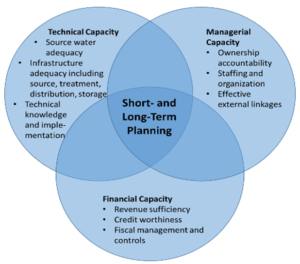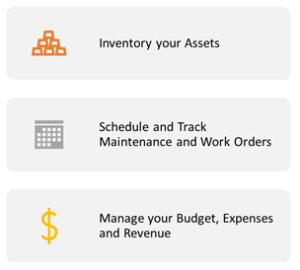What is Capacity Development?
Capacity Development is a process for water systems to acquire and maintain adequate technical, managerial and financial (TMF) capacity. TMF capacity enables water systems to have the capability to consistently provide safe drinking water to the public.
 Capacity development is a fundamental component of the 1996 Safe Drinking Water Act (SDWA) Amendments. The SDWA Amendments provide a framework for states and water systems to work together to protect public health. Every state has developed a Capacity Development Program to assist public water systems in building TMF capacity.
Capacity development is a fundamental component of the 1996 Safe Drinking Water Act (SDWA) Amendments. The SDWA Amendments provide a framework for states and water systems to work together to protect public health. Every state has developed a Capacity Development Program to assist public water systems in building TMF capacity.
Any water system can implement capacity development activities to increase their TMF capacity. Small systems can especially benefit from capacity development. EPA is committed to helping small water systems provide safe drinking water through publications, training, and technical and financial assistance.
Local officials and consumers play an important role in helping small water systems meet regulatory requirements and protect public health. Besides protecting public health, communities that support their water systems are making long-term investments in sustainable communities and economic well-being.
- Capacity Development 101 Webinar – November 2015

What is Asset Management?
Asset management is a process within capacity development that involves maintaining a desired level of customer service for public water systems (PWSs) to provide at the lowest life cycle cost. PWSs need asset management to address aging water infrastructure, make sound investment decisions to maximize limited financial resources, and make costs transparent to support financial decisions. With a proper plan for asset management, a PWS can improve service and reliability, reduce risk and unexpected costs, and enhance communication with customers and stakeholders while realizing many additional benefits.
The following document shares initiatives states are taking to promote asset management.
- 2018 State Asset Management Initiatives – February 2019
Jun 21, 2023 Capacity Development Assessment and Metrics Meeting
State Presentations:
- Arizona’s Capacity Assessment & Tracking Metrics
- Virginia 2023 Triennial Assessment
- Louisiana Community Water System Grades
2022 State Capacity Development Strategy Updates
Following are some of the completed and approved State Capacity Development Strategy Updates (per the 2018 AWIA requirements to include asset management – see more information below)
- Alabama
- Arizona
- Delaware
- Louisiana
- Massachusetts
- Nebraska
- Nevada
- New Hampshire
- North Carolina
- Ohio
- Oklahoma
- Pennsylvania
- Texas
- Vermont
- Virginia
Guidance
Triennial State Capacity Development Program Reports to the Governor – due September 30, 2023!
- New! EPA Memo with Recommended Criteria for the 2023 State Capacity Development Program Reports to the Governor – May 2023
The 1996 SDWA Amendments created a number of specific requirements and programs designed to develop the capacity of small systems. However, it is unique in that it is not a traditional regulatory program. Capacity development is a state effort to help drinking water systems improve their finances, management, infrastructure, and operations so they can provide safe drinking water consistently, reliably, and cost-effectively. More specifically, the capacity development provisions provide an exceptionally flexible framework within which states and water systems can work together to ensure that systems acquire and maintain the technical, financial, and managerial capacity to consistently achieve the health objectives of the 1996 Safe Drinking Water Act.
States and EPA worked together to develop this original implementation guidance for this program in 1998:
- Guidance on Implementing the Capacity Development Provisions of the 1996 SDWA Amendments – July 1998
America’s Water Infrastructure Act of 2018 (AWIA) Section 2012, requires state drinking water programs to consider and include as appropriate asset management into their state capacity development strategies. Consistent with this statutory change, state drinking water programs are expected to revise their capacity development strategies to include a description of how asset management will be promoted through addressing the five-core-question framework of asset management – now extended to December 31, 2022!
1. What is the current state of the utility’s assets?
2. What is the utility’s required “sustainable” level-of-service?
3. Which assets are critical to sustained performance?
4. What are the utility’s best “minimum life-cycle cost” capital improvement plan and
operations and maintenance strategies?
5. What is the utility’s best long-term financing strategy?
EPA Correspondence on AWIA requirements
- EPA Letter to ASDWA Granting the Extension Request for States to Update their Capacity Development Strategies to December 31, 2022 – September 2021
- EPA Memo on Implementation of Capacity Development Program – America’s Water Infrastructure Act – December 2019
Resources to help states with AWIA requirements:
- 2020’s Reference Guide for Asset Management Tools – To identify resources to assist small and medium sized systems to implement asset management practices
- 2018’s States Asset Management Initiatives Document – To learn various assistance, funding, internal, and regulatory activities states are undertaking involving the promotion of asset management.
- 2021 New Capacity Development Strategy Worksheets – Developed from an EPA-State Workgroup to guide States and EPA Regions to identify strengths and weaknesses in the capacity development strategies and ensure that the SDWA and AWIA requirements are met.
- Original 1999 Guidance Document available online for additional SDWA guidance and definitions
- Roll-out webinar slides and recording
- Environmental Finance Center (Southwest and Wichita State) – Providing individual assistance to states. Some examples of assistance: Participating on regional conference calls, reviewing drafts of strategies, stakeholder process. Contact Heather Himmelberger or Nicholas Willis for more information.
- Southwest EFC Asset Management Switchboard– A repository of documentation and tools related to asset management.
ASDWA’s Role in Capacity Development, and the National Capacity Development – Operator Certification Workshop
ASDWA supports states in their capacity development work through a Small Systems Committee that considers state concerns and identifies tasks to enhance states’ abilities; through a state contact list that identifies state capacity development coordinators for mailings and information sharing; and through the ASDWA’s Newsroom. Newsroom posts pertaining to capacity development and asset management can be found at the bottom of the page or by using the Capacity Development filter in the Newsroom. If you would like to be added to the Capacity Development Coordinators email list, or review whom from your state is on the list, contact Deirdre White (dwhite@asdwa.org).
ASDWA and EPA work closely together on capacity development. ASDWA provides state input when EPA has documents, strategies, or tools to review. ASDWA and EPA co-host a National Capacity Development and Operator Certification Workshop. Previously, the National Workshop was conducted every three years, and in the off years, ASDWA participated in the two Regional Workshops for EPA Regions 1-5, and 6-10. Due to the COVID-19 pandemic and additional considerations, ASDWA and EPA conducted a virtual National Workshop in 2020.
- August 2022 National Workshop: View session recordings and slide presentations
- August 2020 Virtual Workshop: Session recordings and information
Tools and Resources
Refer to EPA’s Building the Capacity of Drinking Water Systems for the latest capacity development tools.
Small Community Assistance Planning Asset Management Tool: Guide for Tool Users: – allows users to track either wastewater or drinking water assets and conduct a basic condition and criticality assessment.
*Before using these tools, save as macro enabled for full function.





